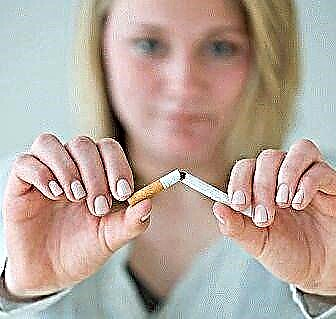What is rickets?
Rickets is a disease associated with a lack of vitamin D in the body, impaired metabolism of trace elements, calcium, phosphorus. A distinctive feature of the disease is damage to the predominantly skeletal system of the child.
 Most often, rickets occurs in babies up to the age of three. This is due to the rapid growth of fidgets, an increased need for vitamins and microelements.
Most often, rickets occurs in babies up to the age of three. This is due to the rapid growth of fidgets, an increased need for vitamins and microelements.
Already from 4 weeks, the manifestation of the disease is possible, but more often the disease occurs in the first 2-4 months of the baby's life. Sometimes signs of rickets in children appear after 1 year of life. In such cases, the child may be seriously lagging behind in development, later mastering walking skills.
Lack of vitamin D leads to a decrease in the concentration of calcium in the bones. The structure of bones changes, they become deformed, become soft, thin. Lesions with rickets are not limited to bone tissue, the work of the nervous system and internal organs is disrupted.
Although many questions arise about rickets, most of the fears of parents are not justified, rickets is rare. Statistics say about 1 case of rickets per 200 thousand of the child population. But if the disease develops, severe bone changes are irreversible. Therefore, it is important to see signs of rickets in infants, to properly care for the child in order to prevent the disease.
Causes and factors for the development of rickets in children
- Lack of sun exposure. Most of the vitamin D is formed when the sun's rays hit your baby's skin. A child receives only 10% of the daily vitamin requirement from food. The importance and significance of walks is underestimated by many parents. Even in cloudy weather, sunlight is enough to produce vitamin D.
- Poor nutrition of the child. Feeding with unadapted milk formulas, cow, goat milk. Modern adapted mixtures contain enough vitamin D. But a poor quality mixture that is not fortified with vitamins can lead to the development of ailment. The same situation is with whole milk, which is contraindicated in infants. Late introduction of complementary foods, the predominance of vegetarian dishes in the baby's diet. The low content of animal protein in crumbs will not immediately lead to rickets. But it will serve as a predisposing factor and, if there is insufficient production of vitamin D in the skin, it will aggravate the condition.
- Premature birth. The accumulation of calcium and phosphorus reserves in the baby occurs at the end of pregnancy. The mother's body does not have time to give enough nutrients until 30 weeks of pregnancy. On the other hand, premature babies are characterized by rapid growth rates compared to full-term babies. The need for trace elements in these children is more pronounced.
- Poor nutrition of a pregnant woman. The low content of protein, trace elements, vitamins in the food of a pregnant woman leads to a decrease in the reserves of elements in a newborn.
- Malabsorption syndrome. Even if there are enough nutrients, the baby's body must properly absorb them. With malabsorption syndrome, the intestine does not work properly, the absorption of substances is impaired.
- Metabolic diseases. There are family, hereditary metabolic diseases. In such situations, the disease is traced in family members, transmitted from parents to children.
- Chronic liver and kidney diseases, infectious processes. In the case of a chronic process, the formation of vitamin D decreases.
- Lack of physical activity. It occurs in children who have suffered damage to the nervous system. This, in combination with other factors, can provoke the development of rickets in a child.
- Polyhypovitaminosis - a lack of many vitamins and minerals.
 In addition to vitamin D, vitamins of group B, E, A, C, microelements are also involved in the structure of bone tissue. Therefore, with the development of rickets, it is worth suspecting a lack of other nutrients.
In addition to vitamin D, vitamins of group B, E, A, C, microelements are also involved in the structure of bone tissue. Therefore, with the development of rickets, it is worth suspecting a lack of other nutrients.
Signs of rickets
Symptoms of rickets in infants differ depending on the period of the disease, the severity of the process. If the diagnosis of rickets in the later stages does not cause difficulties, then at the onset of the disease the manifestations of the disease can be erased, imperceptible.
To determine rickets in a child, you need to understand the periods of the disease, the manifestations of the disease in each of them.
Onset of the disease
 In the first period, the disease is manifested by changes in the autonomic nervous system. The baby becomes restless, sweating, although this has not been observed before. Flinching, sleep disturbance and other manifestations of nervous system excitation are possible. The nape of the baby is balding due to the friction of the sweaty head on the pillow.
In the first period, the disease is manifested by changes in the autonomic nervous system. The baby becomes restless, sweating, although this has not been observed before. Flinching, sleep disturbance and other manifestations of nervous system excitation are possible. The nape of the baby is balding due to the friction of the sweaty head on the pillow.
The doctor pays attention to prolonged red dermographism. By the end of the first period, after 2 - 4 weeks, the bones of the skull begin to change. Attention is drawn to the softening and pliability of the bones along the course of the seams of the skull. The child's muscle tone also changes, hypotension and decreased muscle tone are often observed.
Sometimes the initial signs of rickets go unnoticed, this can lead to the transition of the disease into the peak period.
The height of rickets
During this period, vegetative disturbances continue and manifest themselves more strongly. The general condition of the child deteriorates, the baby becomes lethargic, inactive. The muscle tone of the child is significantly reduced, there is looseness in the joints, it can be difficult for the baby to make the usual movements.
 During the peak period, the symptoms of the skeletal system are clearly expressed.
During the peak period, the symptoms of the skeletal system are clearly expressed.
- Softening of the flat bones of the skull. Softening occurs not only along the sutures of the skull, the process extends to the parietal, occipital bones. When pressed on the affected areas, pliability is felt, the bones resemble parchment, a plate.
- Changing the shape of the skull. As the bones of the skull soften, deformation, asymmetry of the head occurs. Bone tissue continues to form, but does not have time to calcify. The head grows incorrectly, becomes angular. The frontal and parietal tubercles are more pronounced, the skull acquires a square shape.
- The baby's nose seems to be saddle-shaped, with a sunken bridge, and the forehead protrudes strongly, for which it received the name "Olympic". The baby's eyes open wide, there is bulging, exophthalmos.
- The enamel of the child's teeth is affected, caries occurs, the bite is disturbed. Teething rates slow down dramatically, and the large fontanelle closes only after 2 years.
- Deformation of the chest. As a result of softening of the bones of the chest, its shape changes. The rib cage with rickets looks compressed from the sides. Perhaps even protrusion of the sternum forward, there is a so-called "chicken" or "keeled" breast. The spine is deformed, a "rickety hump" appears, and physiological curves are enhanced.
- Bone tissue continues to form incorrectly, thickening appears on the collarbones. The epiphyses of the forearm bones also grow, the wrist thickens as if wearing a "rickety bracelet". The phalanges of the fingers are also susceptible to deformation, creating "strands of pearls"
- Curvature of the bones of the lower extremities. The legs of the child are deformed, become similar to the letter X or O. The doctor diagnoses: hallux valgus or varus deformity of the limbs. The pelvic bones rarely change, and flat feet are detected in almost all cases of rickets.
- Changes in the musculo-ligamentous apparatus. The muscles of the crumbs become weak, flabby, the abdomen - flattened, "froglike". The joints are characterized by looseness, pathological mobility, an increase in the range of motion, the child easily throws his leg over his head. The kid lags behind in physical development from their peers.
- The defeat of all organs. The defeat of muscle and bone tissue affects all organs. The diaphragm becomes flabby and cannot fulfill its function, pulmonary ventilation is impaired. This is manifested by shortness of breath, lung diseases, pneumonia develop easily.
- The cardiovascular system also suffers. Flaccid heart muscle cannot contract properly. Blood pressure decreases, the heart increases in volume, and the pulse quickens.
Reconstruction period
During the recovery period, the disease progresses backwards. The manifestations of neurological disorders gradually disappear, the baby's teeth are erupting. The affected organs begin to perform their function better, the general well-being of the child improves.
Period of residual effects
 The severe course of the disease leads to deformation of the limbs, which persists for a long time. Residual symptoms of muscle hypotension require long rehabilitation and treatment. Such situations are encountered with a running, not recognized rickets in time. The consequences can remain for the entire life of the child, children develop flat feet, scoliosis, and vision impairment.
The severe course of the disease leads to deformation of the limbs, which persists for a long time. Residual symptoms of muscle hypotension require long rehabilitation and treatment. Such situations are encountered with a running, not recognized rickets in time. The consequences can remain for the entire life of the child, children develop flat feet, scoliosis, and vision impairment.
The severity of rickets
Depending on the severity of the clinical manifestations of rickets in infants, 3 degrees of the disease are distinguished.
- Easy course of rickets, rickets of 1 degree. In infants, rickets of the 1st degree proceeds quite easily, there are no violations of psychomotor development. The defeat of bone and muscle tissue is weak and reversible with proper treatment.
- Rickets of moderate severity, grade 2 rickets. The manifestations of rickets are quite pronounced; the weakness of the muscles and ligaments is noteworthy. The child's static functions are disturbed, the spine is deformed, the abdomen becomes large, rounded, the abdominal muscles diverge. From the side of the heart, weakness, muffled heart sounds, increased heart rate, anemia are noted. Indigestion and breathing disorders are possible. Such children lag behind in physical and mental development.
- Severe rickets, rickets of 3 degrees. Differs in the most severe violations from all organs and systems. The nervous system is significantly affected, the child is lethargic, inhibited, does not react to others.
 The patient's skeletal system is deformed, the muscles are extremely flaccid. The child loses the ability to move, forgets the acquired skills. The work of the heart, respiratory and digestive systems is seriously disrupted, and severe anemia develops.
The patient's skeletal system is deformed, the muscles are extremely flaccid. The child loses the ability to move, forgets the acquired skills. The work of the heart, respiratory and digestive systems is seriously disrupted, and severe anemia develops.
The course of rickets
Rickets are divided not only into periods and severity of the disease. The clinical manifestations of the disease are diverse, therefore, experts have identified the course of the disease in the classification.
- Acute current. Rickets develops quickly, it manifests itself in damage to the nervous system and osteomalacia - softening of the bones. The head becomes angular, the back of the head is flattened, the chest is compressed from the sides, and the curvature of the shin bones is possible. This course is typical for premature babies, children with impaired metabolism, who have had severe infectious diseases.
- Subacute course. In a subacute course, bone tissue is affected slowly, gradually. The formation of osteoid tissue is increased, deformed. The parietal and frontal tubercles grow, the head becomes square. Bone cells are deposited on the phalanges, wrists - "strings of pearls", "rickety bracelets". A subacute course occurs in children with malnutrition, with insufficient prevention of rickets.
- Recurrent, undulating flow. The periods of improvement are short-lived, the disease reappears. A recurrent course occurs with the wrong, inadequate treatment of rickets.
Diagnosis of rickets
According to doctor Komarovsky, all the listed symptoms and manifestations of the disease do not allow rickets to be diagnosed. To clarify the nosology, laboratory and X-ray confirmation is required.
Biochemical blood tests will help determine the degree of electrolyte metabolism disturbance. With rickets, there is a decrease in the concentration of calcium and phosphorus in the blood and an increase in alkaline phosphatase.
Is it possible to diagnose rickets with the help of Sulkovich's test? No, this test is used to determine the calcium content in the urine. The test is good for adjusting the dose of vitamin D, but cannot be used as the sole criterion for making a diagnosis.
On the X-ray, the specialist will determine if there are deformities of the bones, how pronounced they are, what is the structure of the bone. Normally, the bone structure looks uniform in the picture, with rickets, areas with insufficient and excess mineral content are determined. With a prolonged severe course of the disease, replacement of connective bone tissue is observed, this indicates the neglect of the process.
Treatment of rickets in infants
To achieve a long lasting result, therapy should include several important points.
- Determination of the factor that caused the disease. A child who is diagnosed with rickets should be comprehensively examined. Without treatment of the cause of the disease, it is impossible to completely get rid of the symptoms of the disease.
- Taking medications. For the treatment of rickets, the use of an aqueous solution of vitamin D3 is most effective. The dosage of the drug is selected by a specialist individually. Doctors recommend checking the calcium level in the child's blood to assess the effectiveness of therapy. High doses of vitamin D3 lead to the development of hypervitaminosis, therefore, self-treatment of rickets is unacceptable.
- Treatment of concomitant diseases. Specialists will determine the amount of necessary therapy for diseases of the respiratory, cardiovascular, and nervous systems. These systems are most often affected with rickets.
- Proper nutrition and regular walks. Daily walks and proper nutrition will help your baby cope with the problem. It is necessary to give the crumbs daily foods rich in the cherished vitamin D. These include cheese, cottage cheese, sour milk products, fish liver, seafood. Walking should be regular, whatever the weather. Without the systematic production of vitamin D by the baby's skin, it is impossible to achieve a lasting result.
- Physiotherapy procedures. Massage, gymnastics strengthen the musculoskeletal system of the crumbs, help fight the disease. The course of ultraviolet irradiation strengthens bone tissue, improves the overall health of the baby.
Prevention of rickets
Moms should know that preventing rickets is easy enough. The child should receive the required dose of vitamin daily. For babies, the best prevention is breastfeeding and daily walks. A nursing mother should eat well, it is possible to use multivitamin complexes. In this case, the risk of an overdose of vitamin D for the child is minimized.
 Timely introduced complementary foods will increase the intake of vitamin, and regular sun exposure will increase its production by the baby's skin. Even in cloudy weather, there is enough UV light to produce vitamin D.
Timely introduced complementary foods will increase the intake of vitamin, and regular sun exposure will increase its production by the baby's skin. Even in cloudy weather, there is enough UV light to produce vitamin D.
It is possible to use the drug to prevent the development of the disease. It is easy to find a vitamin D3 solution in pharmacies. But only the doctor will determine whether the child needs the drug and in what dosage.
Why did rickets occur more often 30 years ago? Dr. Komarovsky claims that at that time they did not yet know how to produce synthetic vitamin D. Modern adapted mixtures contain enough element, so rickets has become extremely rare.
Summing up
Every mother is afraid of the word "rickets", because it entails many problems for the child, developmental delays and is considered almost swearing.In fact, most of the fears of parents are groundless, because rickets is easy to prevent. It is enough to pay attention to the child's day regimen and feed the baby with healthy food.
You should not neglect breastfeeding, because nature knows better what the baby needs. And walking with a child every day in any weather should become a habit and a daily ritual.
Using simple tips and tricks, you will keep your baby healthy, help your baby to develop and actively explore the world.



